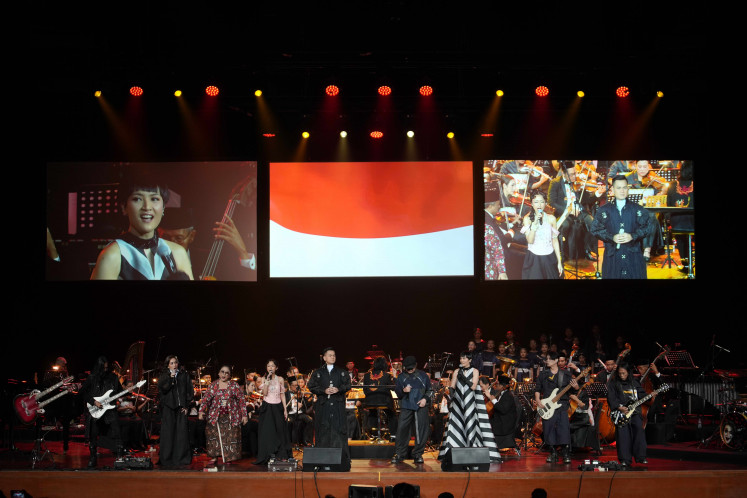Popular Reads
Top Results
Can't find what you're looking for?
View all search resultsPopular Reads
Top Results
Can't find what you're looking for?
View all search results'Potehi' puppets bring celebratory mood
Waiting in line: Potehi, dolls made of cloth stems from poo (cloth), tay (pocket) and hie (puppet)
Change text size
Gift Premium Articles
to Anyone
W
span class="caption">Waiting in line: Potehi, dolls made of cloth stems from poo (cloth), tay (pocket) and hie (puppet). It is known as a Chinese art but many native Indonesians perform it, too (photo above). An erhu player (photo left)accompanies the Potehi puppet show.
In a 3x3 meter room, five people are busy playing musical instruments.
One plays a harp, another plays an erhu (traditional Chinese violin) while the other hits his drums according to a puppet master's rhythm.
The master in question is Sugiyo Waluyo ' known as Subur ' the busiest man in the group. Helped by an assistant, he focuses on reading a handwritten story while playing two puppets.
It's a regular day for the Fu Ho An group from Gudo, in Jombang, East Java.
The group, led by Subur, performs a potehi puppet show, which originates from China. Potehi means dolls made from cloth.
The show uses unique puppets that allow the puppet master to play them with his hands and fingers.
The art of potehi puppetry arrived in the region that is modern-day Indonesia with the arrival of Admiral Cheng Ho in the 16th century.
Man of the show: Puppeteer Sugiyo Waluyo, better known as Subur, of Fu Ho An Potehi group plays the puppet in a recent show in Jakarta.
Potehi puppetry grew during the Jin dynasty between the third and fifth centuries.
Chinese legend has it that potehi shows were first performed by five prisoners who were granted a pardon from a king after they performed a potehi show in their cell a few days before they were due to be executed.
Just like other art forms from Peranakan culture, potehi puppetry then gradually became acculturated into Indonesian culture. The first potehi show held in Indonesia was reportedly staged in 1772.
Originally, the performance was held as a ritual to honor one's ancestors.
During the New Order Era, the government prohibited activities associated with any kind of Chinese cultural expression, including ceremonies and art forms.
Thus, the puppet show was considered illegal and began to disappear from people's memories.
But in the early 2000s, the shows were brought back to the stage upon the request of many members of the community, and today, they are a favorite way of celebrating Chinese New Year in many places.
Although potehi was born of Chinese culture, today most of its enthusiasts are Javanese.
Talking puppets: Potehi puppets show is also played to praise gods as part of praying routines.
Enjoy the show: Potehi puppet shows originated in China 3,000 years ago have become a popular event during the Chinese New Year celebrations.
' Text and photos by JP/Seto Wardhana














